SERENADE OF THE SEAS
MIDDLE EAST REPOSITIONING
2013
I took this 14 day repositioning cruise for the unbelievable price of $634 (includes port taxes, but not approx. taxes of around $300). I ordered this directly with Royal Caribbean Cruise Line. The Serenade of the Seas started sailing January 14th, 2013. I took Delta KLM (1 stop) via JFK to Barcelona and returned from Dubai on KLM via Atlanta. My air price was reduced $650 because I redeemed some Skymiles.
While at the JFK airport in NY, I met some fellow travellers who were waiting for the same flight to the same cruise. It was my good fortune to meet a major presenter on regularly scheduled port talks for the cruise. Dr. Glen Dalberg and his wife also visited other future guests at Gate B20.
NOTE: I did not use video recording, I did not use audio recording, nor did I use flash photography, in any of photos.
At the Barcelona International Airport, we were greeted by a Royal Caribbean representative who gathered us together and arranged transportation to our home for the next two weeks.
As we approached the dock area. I took a quick shot of the Columbus monument through the wind shield of the bus.
Serenade of the Seas
January 14, Barcelona
As soon as we boarded the ship, I took some shots of Barcelona from the open deck.
One of our first organized activities was to gather at our assigned muster stations for a safety drill and life jacket demonstration.
The schedule called for a 5 pm departure launch out of the harbor and out to sea.
While music played in the Centrum (Atrium)
SHOWTIME 7:45 pm Tropical Theatre
FLASH & FEVER
Magic Transformation and Acrobatics



Day 2, January 15
Guest Lecturer 10:45 Dr. Glen Dolberg
Barcelona Gaudi, Gaudy And Allure
For architectural examples of Gaudi see my Barcelona photos of 2004.

V is for Victory!
Our cruise agenda of the day took us pas Sardinia and Sicily (Sardinia below off the starboard side)
I signed up for 6 pm dining at a table for 8. Since tonight was formal night our Scottish friend wore
a dress-up outfit replete with kilt.
Everyone else on the table but me were from the UK

Shrimp salad for starters
Reflection Dinning Room 6:00 pm Roast Duck


Headliner Showtime 8:45 pm
THREE LEGENDS OFTHE STAGE AND SCREEN
starring the RAT PACK RETURNS

"Frank Sinatra" (above and below)
"Sammy Davis, Jr. " (above right)
"Dean Martin " (below, right)


Sammy Davis, Jr., right with Frank Sinatra.
January 16, Wednesday, At Sea

Water was rough.

Guest Speaker 10:30 am in Tropical Theatre

Entertainment at the Centrum
Dinner 6 pm Fruit salad for starters

Ocean Trout for entree



Celebration with the Waiters (above)
Evening Showtime in Tropical Theatre with The Comedy of Beastro 8:45 pm
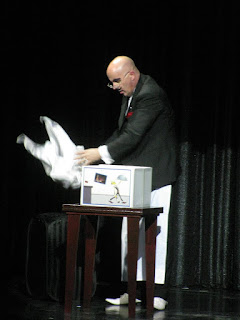

ROCK & ROLL REUNION 10:15 in the Centrum






Competition for King and Queen of Rock -- the Winner!

8 am breakfast at the Reflection Room -- Asian Stir Fry over Scrambled Eggs
10:30 am Port Talk on Egypt in the Tropical Theatre

Dinner with Beef Stroganoff

Alexandria was founded around a small pharaonic town c. 331 BC by Alexander the Great. It remained Egypt's capital for nearly a thousand years, until the Muslim conquest of Egypt in AD 641, when a new capital was founded at Fustat (Fustat was later absorbed into Cairo). Ancient Alexandria was best known for its Lighthouse of Alexandria (Pharos), one of the Seven Wonders of the Ancient World; its library (the largest library in the ancient world); and the Catacombs of Kom el Shoqafa, one of the Seven Wonders of the Middle Ages.
Tour 8 am, I have signed up for the January 18th El Alamen. The evening before we arrived in Alexandria, we received notice that there would NOT be SHOPPING STOPS included in the tours, although the duration will remain the same, with more time at venues. Security steps were taken because of demonstrations held to protest the impositions of Islamic policies by the government.
MY TOUR AX16 DEPARTED 9 AM
Since the protests included strikes of all kinds, there was no pickup of rubbish. Garbage was accumulating everywhere along the streets. Guide said everyone on strike until balanced government.

Five tour buses made up the first convoy leading out of the city. Security Police escorts accompanied us until we reached the major highway leading out of the city. After that the buses could travel independently.
.

After a good hour drive we entered the gate to the city of El Alamein.

It was there in November 1942 when the Allied forces under the command of British General Montgomery put a halt to the advance of Nazi Afrika Corps who considered El Alamein the key to the control of the African continent. The Allied victory in the battle of El Alamein marked the beginning of the end for the Axis Powers in North Africa, crushing the mystique surrounding the "Desert Fox," German Field Marshal Rommel. The Battle of El Alamein was one of the most violent as well as most important confrontations during the Second World War.
General Montgomery had two things going for him when he was preparing for the decisive battle at El Alamein. Firstly he had access to the little known secrets from Bletchley Park, known as Station X, on intercepts of the secret German code Enigma. Secondly, he had set up a 'theatrical' company many miles south of El Alamein, in which a phony Army was set up, with wooden and paper tanks, phoney radio traffic and this convinced Rommel that a push was being planned down there. He therefore diverted much needed armour and men to counter this 'phony army'. So much so, that when Monty launched his offensive it was against a force weakened to that extent.
 Montgomery was actually waiting for the arrival of Sherman tanks - 300 of them to assist the Allies. Their 75 mm gun shot a 6 lb shell that could penetrate a Panzer at 2000 metres. The 300 Monty had were invaluable. In the days leading up to the battle, the Germans had 110,000 men and 500 tanks. A number of these tanks were poor Italian tanks and could not match the new Sherman’s. When we visited the War Museum we saw a number of those flimsy Italian tanks parked on the grounds. I thought the museum exhibits inside the center rather bland.
Montgomery was actually waiting for the arrival of Sherman tanks - 300 of them to assist the Allies. Their 75 mm gun shot a 6 lb shell that could penetrate a Panzer at 2000 metres. The 300 Monty had were invaluable. In the days leading up to the battle, the Germans had 110,000 men and 500 tanks. A number of these tanks were poor Italian tanks and could not match the new Sherman’s. When we visited the War Museum we saw a number of those flimsy Italian tanks parked on the grounds. I thought the museum exhibits inside the center rather bland.

Rommel put tank against tank — but his men were outnumbered. On Nov 2nd Rommel knew that all was lost and disobeyed Hitler's order to fight to the finish which would have resulted in total annihilation of the Afrika Korps. As it was Rommel had lost a quite few of his senior officers, many captured. Rommel had lost 25000 killed, and Monty 13,000. A costly battle that eventually ended German interest in North Africa. The battle of El Alamein also proved to be the catalyst to allow Allies to take part in the invasion of Europe's 'underbelly,' Sicily and Italy.
Allied forces broke the Axis line and forced them all the way back to Tunisia. Winston Churchill said of this victory: "Now this is not the end. It is not even the beginning of the end, but it is, perhaps, the end of the beginning." After the war, he wrote: "Before Alamein we never had a victory. After Alamein, we never had a defeat."
Armed security guard outside of War Museum at El Alamein

A short drive west of town, perched on a small peninsula overlooking the sea was the citadel-like cemetery, the final resting place for British Commonwealth soldiers. We watched a wreath laying ceremony by a visting couple (who shed tears). Interestingly enough, most of the passengers on our cruise ship were from UK.

Our third stop of this tour was at the German Memorial. We had to drive along a desert setting to reach the site.


But the memorial was located very close to the Sea



The entrance to the memorial had a large Christian ceramic cross.
Under the arms of the cross were portrayals of grief for lost loved ones. The one on the left signified lost fathers, sons and husbands. The one on the right hand side (shown below) depicted the sorrow of mothers, daughters and wives.
As we left the memorial, I took a photo (through the windshield) of the bus ahead of us driving along the dusty exit road.
Stop number four, the last stop, was the Italian Memorial.
Note that the remains of United States soldiers were not buried at El Alamein.


An hour and twenty minutes drive of 70 miles took us to Alexandria. We had had a good workout, at least us some of older people thought si. This cab driver in Old Alexandria looked as tired as we felt.
That evening's dinner at the Reflection Dinning Room presented a pleasant experience. Our waiters really pampered us.

January 19, Alexandria, Egypt
Since I had earlier visited Egypt on a 14 day tour, which included a full day in Alexandria and seven days in Cairo, I stayed on board and observed the city of Alexandria from the ship.

As we sailed out of the Port of Alexandria, the crew put on a poolside celebration skit.



As this lady below watched the celebration, the gentleman on the right observed Alexandria fade away.

Then at 4 pm we had our power point port talk by Dr. Glen.
6 pm dinner Fred ordered the Greek salad and baked perch with sliced potatoes.
A make-belief pirate appeared interested in gold watch at our table.

Showtime 8:45 pm featured the Comedy of Jeff Stevenson

9:45 pm An Evening of Jazz Starring the RC Singers and Orchestra at the Centrum



When I returned to my room for the evening -- there was a bat looking at me.
January 20, Suez Canal, Egypt (Cruising)
The Suez Canal also known by the nickname "The Highway to India," is an artificial sea-level waterway in Egypt, connecting the Mediterranean Sea and the Red Sea. Opened in November 1869 after 10 years of construction work, it allows transportation by water between Europe and Asia without navigation around Africa. The northern terminus is Port Said and the southern terminus is Port Tawfik at the city of Suez. Ismailia lies on its west bank, 1.9 mi north of the half-way point.
Napoleon Bonaparte's interest in finding the remnants of an ancient waterway passage culminated in a cadre of archaeologists, scientists, cartographers and engineers scouring the area beginning in the latter months of 1798. Their findings, recorded in the Description de l'Égypte, include detailed maps that depict the discovery of an ancient canal extending northward from the Red Sea and then westward toward the Nile.
Napoleon had contemplated the construction of another, modern, north-south canal to join the Mediterranean and Red Sea. But his project was abandoned after the preliminary survey erroneously concluded that the Red Sea was 33 ft higher than the Mediterranean, making a locks-based canal too expensive and very long to construct. The Napoleonic survey commission's error came from fragmented readings mostly done during wartime, which resulted in imprecise calculations. Though by this time unnavigable, the ancient route from Bubastis to the Red Sea still channeled water in spots as late as 1861 and as far east as Kassassin.
The Suez Canal Company (Compagnie Universelle du Canal Maritime de Suez) came into being on 15 December 1858 and work started on the shore of the future Port Said on 25 April 1859. The excavation took some 10 years using forced labor (corvée) of Egyptian workers during a certain period. Some sources estimate that over 30,000 people were working on the canal at any given period, that altogether more than 1.5 million people from various countries were employed, and that thousands of laborers died on the project.
I went up to the upper decks at 1 am to witness our entrance to the canal. But, it wasn't until 2 am that the pilot ship approached the Serenade of the Seas to guide us into the port of Said (pronounced sa- eed).

In the distance at 2 am we could see Said, Egypt. By 3 the view was more pronounced.
It was very cold and the brave few on deck shivered in their jackets.
The canal is single lane with passing places in Ballah By-Pass (while we slept) and in the Great Bitter Lake (which we entered at breakfast).
The land appeared desert like with mounds of sand.
Entrance of the Great Bitter Lake
Looking back (northward) at the single lane Suez Canal
Ship at right waiting for our convoy of ships to leave canal so it could enter.
Pilot boat (below right) directed us to our waiting spot on the Great Bitter Lake.
Another look back at where we had been
Great Bitter Lake
Other ships in waiting


Fishing boat on the lake
The Suez Canal contains no locks; seawater flows freely through the canal. In general, the canal north of the Bitter Lakes flows north in winter and south in summer. The current south of the lakes changes with the tide at Suez.
When we reached our assigned waiting spot the props were switched to reverse,
stirring up the sandy bottom of the shallow lake.
Sea life from the botom of the lake now surfaced -- attracting hungry birds.
After the northward bound ships had progressed, we prepared to enter the Little Bitter Lake.

Fishermen casting their nets
I took a break to watch another presentation in the Tropical Theatre.
We entered the Little Bitter Lake.
Meanwhile a Bar-B-Que lunch was prepared at pool side.

The ship moved slowly through the very shallow water. A sea lane was marked off to guide us.
We continued on through the southern portion of the canal.
Our ship continued to move slowly because the wake eroded the shore line.
At last we reached the end of the canal and entered the Red Sea.



Today the canal is owned and maintained by the Suez Canal Authority[ (SCA) of Egypt. Under international treaty, it may be used "in time of war as in time of peace, by every vessel of commerce or of war, without distinction of flag."
The environmental Impact: The opening of the Suez Canal in 1869 created the first salt-water passage between the Mediterranean and Red seas. Although the Red Sea is about 1.2 m (4 ft) higher than the eastern Mediterranean,[68] the current between the Mediterranean and the middle of the canal at the Bitter Lakes flows north in winter and south in summer. The current south of the Bitter Lakes is tidal, varying with the height of tide at Suez. The Bitter Lakes, which were hypersaline natural lakes, blocked the migration of Red Sea species into the Mediterranean for many decades, but as the salinity of the lakes gradually equalised with that of the Red Sea, the barrier to migration was removed, and plants and animals from the Red Sea have begun to colonise the eastern Mediterranean.
The Red Sea is generally saltier and more nutrient-poor than the Atlantic, so the Red Sea species have advantages over Atlantic species in the salty and nutrient-poor eastern Mediterranean. Accordingly, most Red Sea species invade the Mediterranean biota, and only few do the opposite. This migratory phenomenon is called Lessepsian migration (after Ferdinand de Lesseps) or Erythrean invasion. Also impacting the eastern Mediterranean, starting in 1968, was the operation of Aswan High Dam across the River Nile. While providing for increased human development, the project both reduced the inflow of freshwater and ended all natural nutrient-rich silt from entering the eastern Mediterranean at the adjacent Nile Delta. This provided less natural dilution of Mediterranean salinity and ended the higher levels of natural turbidity, additionally making conditions more like those in the Red Sea
Dinner: Creek Salad and turkey
After dinner music to dance by was playing at the Centrum

Then for Showtime our cruise director introduced our guest performers.




January 21, Safaga, Egypt 6 am arrival 10 pm departure

I limited myself to viewing the environs of Safaga from the ship. A number of passengers chose to take the excursion to Luxor, but I passed on that because of an earlier visit on another tour.
Buses leaving for Luxor. Note the security man posts that they will pass by after turning left.

Obviously, the harbor water is not very deep.
JACK AND THE HIS MAGICAL BEANS was featured at the Centrum.


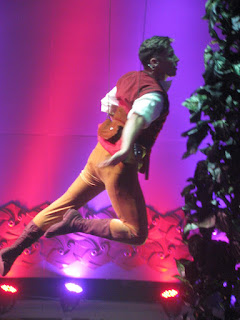

HEADLINER SHOWTIME featured JANE CURRY,
EXCEPTIONAL LADY WITH A GREAT VOICE
8:45 pm in the Tropical Theatre

January 22, Tuesday, Red Sea (not really red)
6:45 am morning sunrise over Saudia Arabia (direction of Mecca). After taking this photo I headed down to Reflection Room for French toast and English bacon.
10:30 am very good port talk on the Historical Muhammad, held in the Tropical Theatre
On the way to lunch I stopped to watch belly dance instructions at the Centrum.
An additional talk presentation was given in the Tropical Theatre on Royal Mistresses, 2:00 pm
I especially appreciated the session on the Tudors and Stuart rulers of England


SHOWTIME 8:45 featuring THE MAGIC AND COMEDY OF BOB TURNELL



January 23, Wednesday, Red Sea
Dr. Glen Dalberg presentation at 10:30 am in the Tropical Theatre


More belly dance instruction at the Centrum:

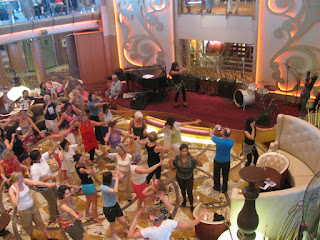
Fish for lunch in the dinning room
Evening dinner: steak medium well
Showtime 8:45 in the Tropical Theatre: LEGENDS OF SOUL & MOTOWN




After the show I wanted to go out on deck, but the door was sealed shut. This notice was posted.

"For safety reasons, all open decks will be closed while in the Gulf of Aden from dusk to dawn."
The Captain had issued a printed notice earlier: (And we had a drill.)
"As you may be aware, pirate activity has occurred in the Gulf of Aden during the past few years. Between January 23 and 27, we will be traveling through the area where the prate activity has taken place..."
"In addition to being fasterand more manueverable , we also have more security than the ships being targeted."
"During the passage, we will have lookouts in place around the ship. For the safety of our guests and crew, the outside decks will be closed from sunset to sunrise. Also, in order to improve our ability to look out into the sea art night, we will turn off several external lights. At night we ask that you keep stateroom curtains closed and balcony lights off."
"During our transit we will likely encounter many small fishing boats. If that happens I may take steps to keeping them at a distance, including changing our course, or even weaving from side to side to discourage them from getting too close. There is no reason to be concerned over these actions; however in the unlikely event we encounter pirates, I will make an announcement and may ask that you move away from the sides of the ship. Should this be necessary, please remain calm and quickly follow instructions provided to you at that time. I will use the code word Operation Safe Haven" and further guide you with announcements."
"Guests with inside staterooms should stay in their room. Guest with outside staterooms should move into corridors outside their stateroom. Stateroom attendants will be assisting guests in outside staterooms, Crew members in the lounges will direct guests to move away from any windows and toward the center of the ship."
I had read earlier: Some 12 nations, including the U.S., have assigned warships to the area to create a maritime protection zone. This is part of a close support convoy system, established by the European Union, that uses warships and helicopters to protect vessels by coordinating group transit through what's become known as "pirates' alley." About 20,000 vessels a year go through the gulf area. They can make arrangements to join scheduled military-escorted passage.
January 24, Thursday, Gulf of Aden
Every lunch I started off with a massive veggie salad.
I noticed that the same ships remained in our proximity, possibly part of a convoy.
SHOWTIME STARRING COUNT DIMAS
10 pm at the Centrum: 70's DISCO INFERNO
January 25, Friday, Gulf of Aden (3rd night of blackout)
Fellow ship still off port side, same position as yesterday morning. View from Windjammer.
Television channels very limited. No CNN or ESPN or anything but E Channel
Port Talk by Dr. Glen Dalberg in Tropical Theatre 10:30 am
Dinner dessert 6 pm dinning room
SHOWTIME 8:45 pm in the Tropical Theatre








Nighttime Partner
January 26, Saturday, Gulf of Aden (4th night of blackout)
6 am breakfast at the Windjammer (instead of Reflections dinning room). Those are chopped onions on the fried tomato and corned beef on top of the fried eggs.
Another great port talk at 10:30 am
SHOWTIME 8:45 pm



9:45 pm Party Music and Dancing at the Centrum
10:30 pm SERENADE OF THE SEAS CHOIR PERFORMANCE at Centrum







January 27, Sunday, Muscat, Oman
5 am arrival 6:15 breakfast
Views of Muscat from Deck 12, early morning


I signed up for the mystical tour of Muscat. Our first stop was at the Grand Mosque. Brochure stated: "The instructions for building the largest mosque were issued by His Majesty Sultan Qaboos bin Said. The invested patronage of His Majesty Sultan Qaboos, accompanied by his instructions to the team overseeing the project at the Diwan of the Royal Court, has endorsed the spiritual and architectural role of the Grand Mosque in marked tribute to the distinguished and noble Islamic heritage."
The 2000 edition of Lonely Planet asserted that Oman and the United Arab Emirates would not allow non-Muslims to any mosque (p. 29). Obviously that had changed, because here we were on a tour.
The ladies had to cover themselves and don head scarves to cover their hair.

Our guide covered herself, too.

Ladies visiting the mosque are required to not wear shorts, beachwear or sleeveless outfits as they need to be fully covered from head to toe. Long sleeve shirts and long pants are required. No sandals or exposed feet. Guests must wear socks. Guests who have tattoos must cover the tattoo prior to entering the mosque.
We formed two lines --one for women and one for men. The women were inspected one by one.
Two of the ladies did not pass inspection and were not allowed to enter.


We entered the worship area of the Grand Mosque (where only the men attended worship). A grand light fixture hung from the domed eiling.

Front and center was the direction indicator of Mecca. Next to it was the pulpit for the iman.

The striped archways (on right) were very typical of Islamic architecture.

Women, of course, were segregated from the men and prayed in a less elaborate place. Usually there was a screen that separated the men and women.
Back outside I snapped a slot of the beautiful flowers with the dome in the background.
Back on the bus our guide passed out bottled water and passed out samples of the currency.

Next we visited the colorful Muttrah Souq. Here, scents of exotic Arabian perfumes and spices float through the air. In Biblical times Oman was the hub of the rich frankincense trade. It became as valuable as gold during the time of Christ.Other shops specialise in famous Omani khanjars (daggers), antiques, traditional silver jewelery, handicrafts in copper, camel bone, wood, leather, and hand made Omani costumes.





An engraved depiction of the early spice trade (on left). Our meeting place at the right.

Our next stop was a brief one on the highway so we take photos of the old city of Muscat. Note the fort in the background.
We proceeded on to Bait Al Zubair, a private museum that houses traditional Omani heritage items. This is a private museum owned by His Excellency Mohammad Al Zubair - Advisor to His Majesty the Sultan for Economic Planning Affairs. The exhibits include collections of Omani weaponry, jewelry, clothing, household items, books, photographs, paintings, maps, etc. which aim to show and preserve the rich Omani heritage and culture.

Al Alam Palace, the official residence of Sultan Qaboos. The architecture is a blend of oriental and occidental styles in rich hues of gold and blue. The palace is strategically positioned between the two medieval fortresses of Jalali and Mirani, used by the Portuguese towards the end of the sixteenth century.
As we returned to the ship, I snapped pictures through the windows of our bus. The first one is of an old fortress tower.
Shortly after we re-boarded our ship left the dock and headed out to sea.
FAREWELL SHOWTIME: ACROMAGIC
FROM CIRQUE DU SOLEIL AND THE MOULIN ROGUE
7:45 in the Tropical Lounge





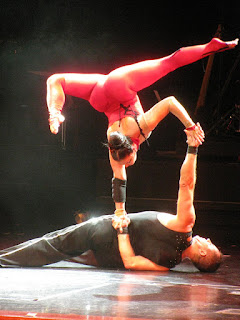



Our ship traveled through the Strait of Hormuz (see red arrow on map) at night.
The Strait of Hormuz is a narrow, strategically important strait between the Gulf of Oman in the southeast and the Persian Gulf. On the north coast is Iran and on the south coast is the United Arab Emirates and Musandam, an exclave of Oman.
The strait at its narrowest is 21 nautical miles wide. It is the only sea passage to the open ocean for large areas of the petroleum-exporting Persian Gulf and is one of the world's most strategically important choke points. Approximately 20% of the world's oil, which is about 35% of seaborne traded oil, passes through the strait.
Iran has threatened to block the Strait of Hormuz.
Suzanne Maloney, an Iran expert at the Brookings Institution, said, "The expectation is that the U.S. military could address any Iranian threat relatively quickly."
General Martin Dempsey, Chairman of the Joint Chiefs of Staff, said in January 2012 that Iran “has invested in capabilities that could, in fact, for a period of time block the Strait of Hormuz.” He also stated, “We’ve invested in capabilities to ensure that if that happens, we can defeat that.”
In July 2012, the UAE launched a new pipeline that traverses from the Habshan fields in Abu Dhabi to the Fujairah oil terminal on the Gulf of Oman, thereby effectively by-passing the Hormuz. It will have a maximum capacity of 1.8 million barrels per day (bpd).
January 28, Monday, Dubai, United Arab Emirates
The Serenade of the Seas docked at 7 am. Shortly after that I ventured out to the open deck and took photos
My tour started with driving on the Sheikh Zayed Road where one can marvel at the amazing architectural feats in the shape of Dubai's modern skyline. The road will take us passing by Burj Khalifa the tallest man made structure in the world standing at the height of 828 m(2716 feet). The site where the tower stands has officially been declared as the new Downtown. Note the quality of the photos may have been diminished somewhat because I took them through a window of a moving bus.
Also, the morning air was a little hazy.



Our first photo stop was near the world-renowned 5 Star hotel called Burj al Arab. Some refer to it as as the world's only seven star hotel.
And then it was back to the bus for another scenic drive

Photos through the windows of the bus

Then we arrived at the Jumeirah Mosque, a magnificent example of modern Islamic architecture.

Nearby was this air-conditioned bus stop. Dubai has a very hot arid climate. Summers in Dubai are extremely hot, windy and humid, with an average high around 108 °F and overnight lows around 84 °F
Back on the bus again as we headed to the World Trade Center, inaugurated by Queen Elizabeth II in 1979, at the time it was considered the tallest and oldest commercial tower in the Middle East.

Our next stop wast the Dubai Museum, which is housed in the 150 year old Al Fahidi Fort. Gathered here are a range of interesting artefacts from Dubai's pre-oil days, which focus on historical links with trading and pearl diving.




And then just outside the fort.

After traversing Dubai's commercial center, we headed for the Dubai International Airport where we were to be dropped off for our flights home.
Monday, January 28
Flight: Delta 7
Originally Departure: 11:05 pm from Dubai, United Arab Emirates
but delayed flight left 1:05 an Tuesday.
Arrives: 6:00 am (January 29) at Atlanta, Georgia
Seats: 49C
Cabin: Economy Class
Tuesday, January 29
Flight: Delta 340
Departed: 7:25 am from Atlanta, Georgia
Arrived: 9:04 am at Minneapolis - St Paul, Minnesota
















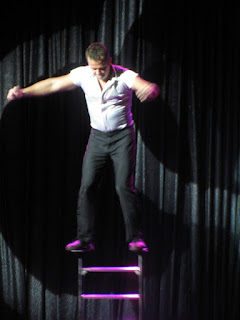


















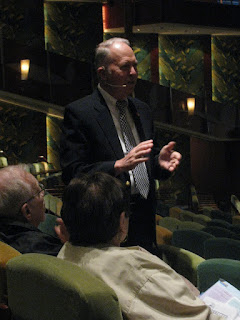










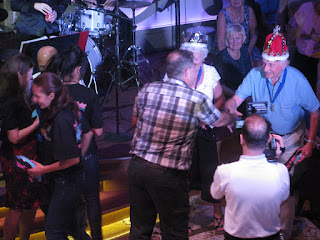





































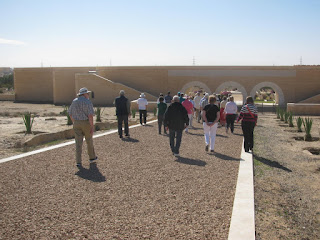



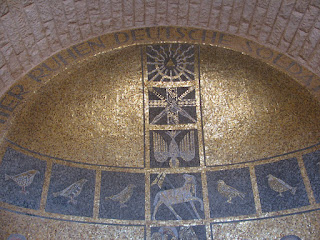



























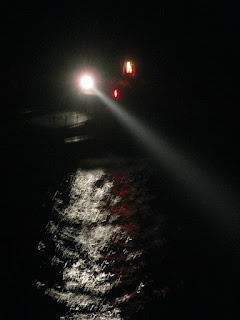
























































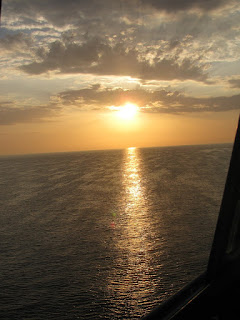




























































































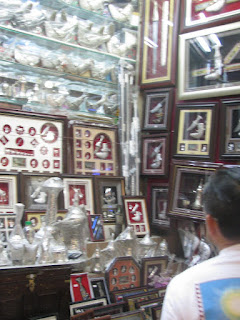





























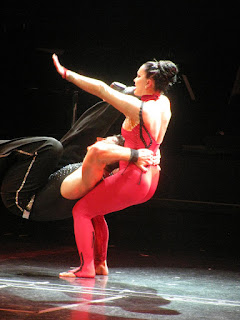













































No comments:
Post a Comment